The first time I saw a wonderful display of
kokedama, a variation of Japanese bonsai, hanging against a stark white wall, I never imagined how easy it would be to create this plant-and-string look. “Kokedama” means “moss ball” in Japanese; it is made by transferring a succulent, small fern or other plant into a ball of soil held together with moss and colorful string or twine, which is also used to hang the plants. These string gardens look great hanging in homes and are a fun way to bring the outdoors in
. Follow along with floral designer Mandy Grace of Hawaii as she walks us through how to make a cool hanging-plant string garden.
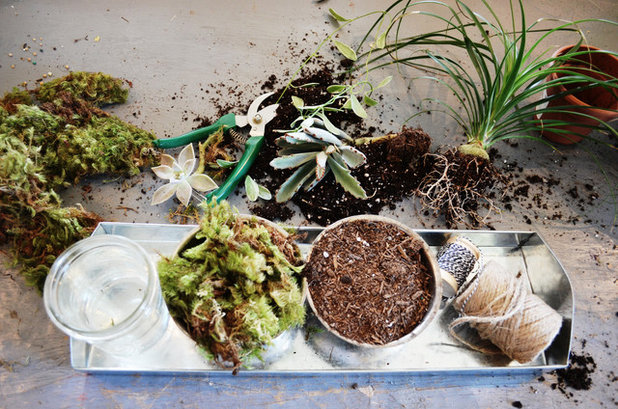
Ashley Camper Photography
Materials and tools:- Tiny plants (succulents and baby ferns work well)
- Peat soil, cacti soil, clay mud
- Dry sphagnum moss
- Scissors
- 100 percent cotton thread
- Nice, colorful packing string (twine and hemp are favorites)
- Gloves (it will get messy)
- Jar of water
- Bowl (optional)

Ashley Camper Photography
Remove as much soil as possible to expose the roots of your chosen plant. Be very thorough during this process, but also be very gentle.
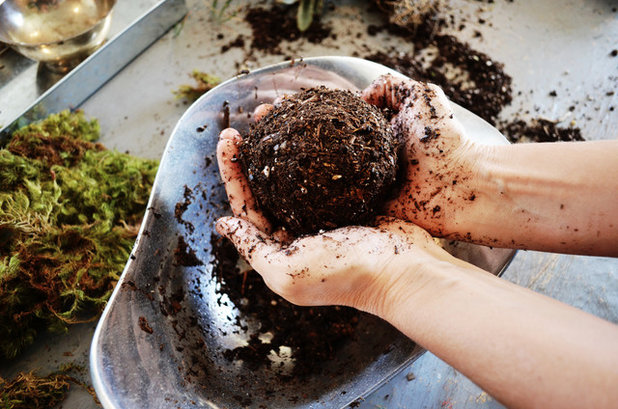
Ashley Camper Photography
Mix peat soil, cacti soil and mud clay together; a bowl will help contain the mess. Then add just enough water so the soil begins to form a dough-like consistency. You should be able to form a small ball that won’t fall apart.
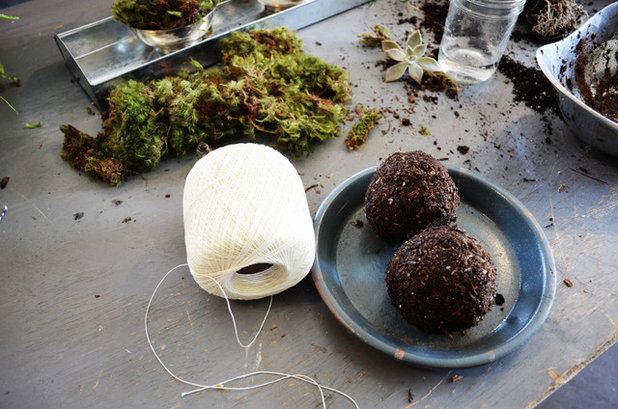
Ashley Camper Photography
Keep the ball of soil as small as possible, but make sure it is large enough to accommodate the roots of your plant.
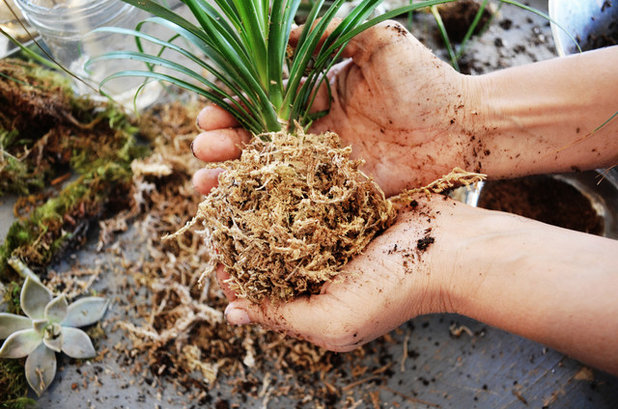
Ashley Camper Photography
Take a bunch of dry sphagnum moss and wrap it carefully around the roots of your plant to form a circular, compact shape.
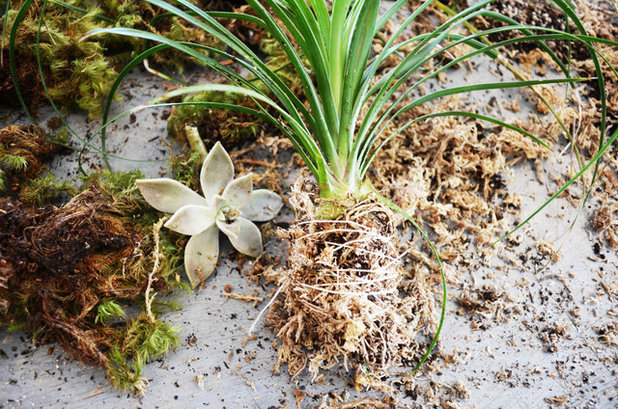
Ashley Camper Photography
Then tie cotton string around the sphagnum moss to hold it in place.
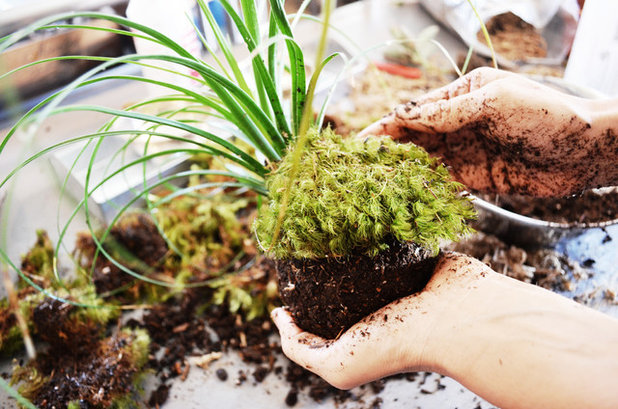
Ashley Camper Photography
Make a small hole in your soil ball and gently press the plant inside it. Be sure to “close up” the soil to reform the spherical shape.
Now it’s time for the fun part. Take small sheets of moss and press them firmly into the soil. Don’t leave any open spaces.
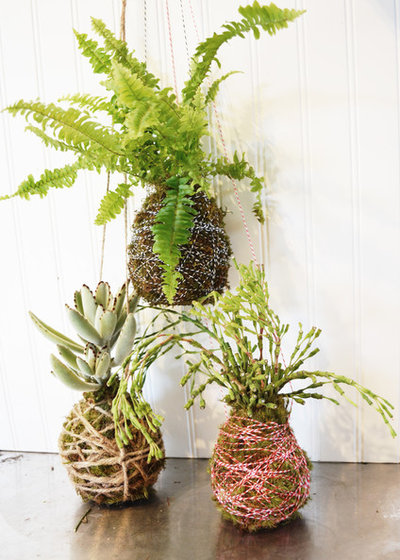
Ashley Camper Photography
Wrap the string or twine around the ball as if you were packing a present, leaving enough extra string on each side to allow you to hang the plant. You can use natural or white string or else choose a color to go with your decor or the season.
Choose a nice spot that gets indirect light, install a hook and hang your wonderful planet of moss.
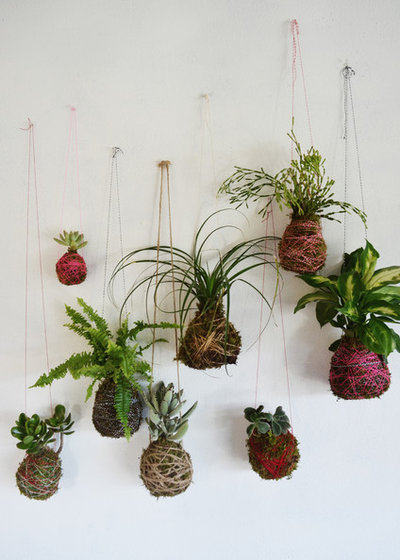
Ashley Camper Photography
Different plants require different amounts of food, water and sunlight to survive, so there are no one-size-fits-all rules, but here are some general guidelines for your indoor hanging garden:
Watering: Weight is a good indicator of when your hanging plant needs water. Hold the ball in your hand and see if it feels heavy. If it does, then the ball has enough water for the roots. If the ball feels light, then watering is needed. Fill a bowl with enough water to cover the ball. Place it in the water and let it soak for two to three minutes. Remove the ball and gently squeeze it to allow the water to soak into the center. This should be enough watering for several days.
Lighting, temperature and ventilation: Choose a hanging plant that will thrive on the amount of light you can provide. Most indoor plants prefer a humid atmosphere and indirect light. Proper ventilation is needed for growth.
More:Bring Living Color to Your Table
DIY: Make a Sweet Gift of Future Blooms





